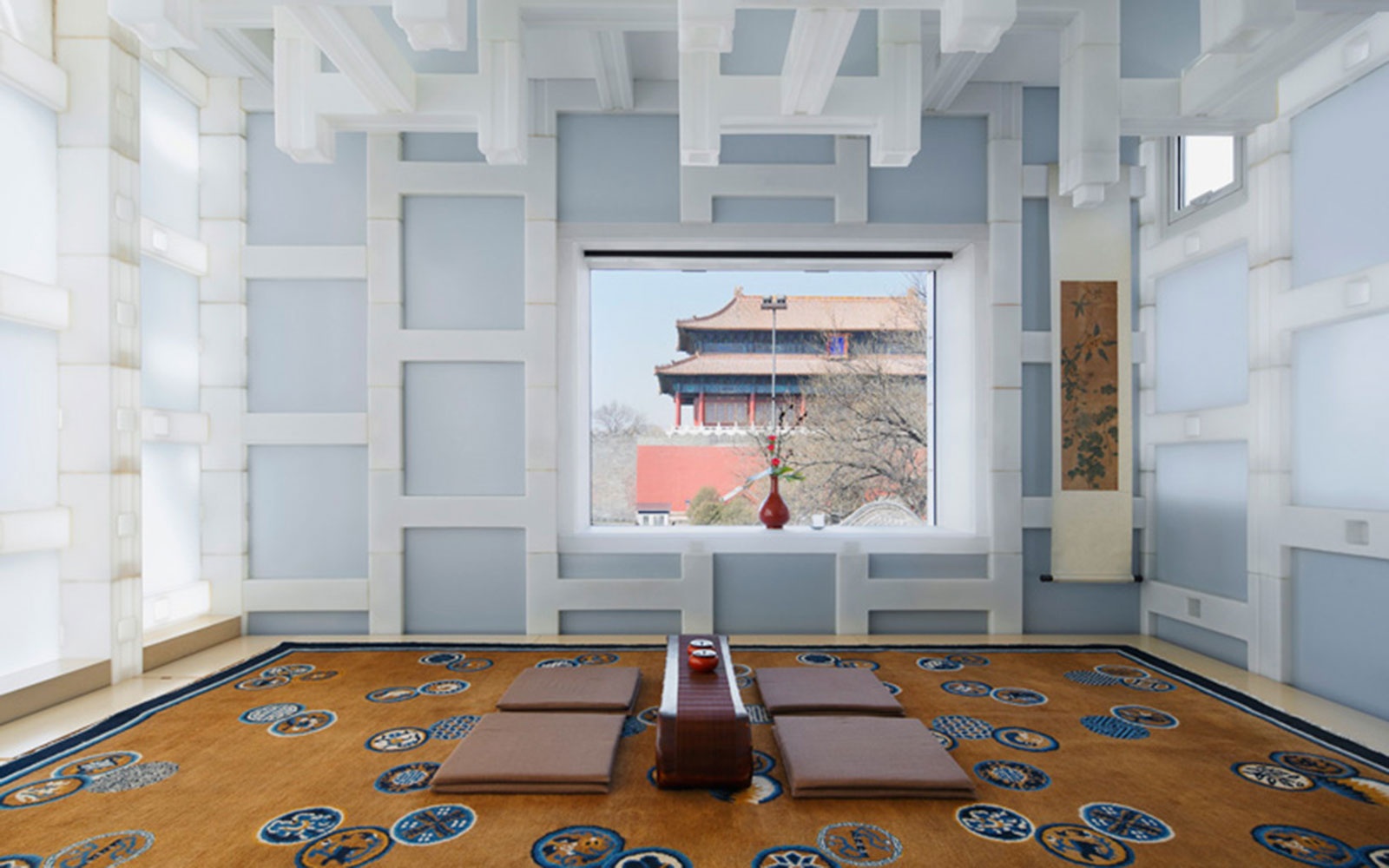
Kengo Kuma brings modern materials into dialogue with one of China’s ancient treasures. It’s a new must-see near the Forbidden City.
Counting 980 buildings spread across 180 acres, Beijing’s Forbidden City is listed by UNESCO as the largest collection of ancient wooden structures in the world. It is also estimated to receive some 8 million visitors a year.
Right across the street from the eastern gate is a teahouse recently renovated by acclaimed Japanese architect Kengo Kuma, updated to pay tribute to the Ming-era imperial palace’s architectural heritage, but with a rather surprising material: polyethylene plastic.
A desire to reinterpret Japanese building traditions for the 21st century runs throughout Kuma’s work, probably most notably in his focus on transparency. The sense of lightness and immateriality once brought about through the use of shoji paper screens Kuma achieves with materials like glass and white acrylic.
With this project, Kuma plays off the brick-and-mortar palette of Beijing with walls of white plastic latticework, interlaced with panels of blue polycarbonate to create a “modern version of masonry,” according to a statement from the firm. One that lets in more sunlight, “to create a gentle space of Zen, just as the paper used for Siheyuan [Chinese courtyard residences] did in the past."
On the ground level, the dark timber floors of the original structure remain. So does the inclined, tiled roof, except that now it encloses an open-air terrace, where the Forbidden City rises beyond a low wall of Lego-like plastic bricks.
More good reads from T+L:
• Best Countries for Solo Travelers
• Best Places to Travel in 2015
• World's Best Awards 2015